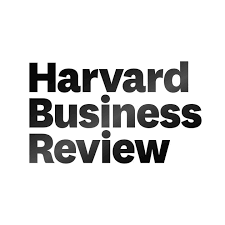The Power of "Risktakes"

Your animated interaction in response to my post The Miracle of Making Mistakes delved deep into the subject, broadened the interpretation of a mistake, and even coined a delightful new term: Risktakes. Thank you Notmd, Dawna, Brett, and all the others, who provided terrific insights over the past four weeks.
A mistake is as an error in action or calculation caused by poor reasoning, carelessness, or insufficient knowledge. Risk is the exposure to the chance of injury or loss, the chance that the actual return might be different than the one expected. Thus, a risktake is an error — but not one caused by carelessness or insufficient knowledge. Its possibility has been foreseen, calculated, and accepted.
A simple test will help you differentiate a risktake from a mistake. Ask yourself: Did I account for the possibility of failure before it happened — or did the mistake catch me by surprise? We are not promoting carelessness, but genuine, well-intended mistakes, as Dawna pointed out.
Every new company and new product launch, every new service and new discovery has the potential of being a risktake. In fact, every strategic decision has the potential of proving to be just that. We usually take them with the joy experimentation brings, enhanced by the courage to fail and stand up again. Doing everything “perfectly” breeds stagnation and laziness, argued Brett.
I am all for taking risks as long as the process is supported by conviction, persistence, and discipline, and it is based on knowledge. During the recent worldwide recession, the decision by HCL to acquire Axon — the biggest overseas acquisition by an Indian IT company — had the potential of becoming a risktake. There were many critics of the deal, but so far, the takeover hasn’t given them the occasion to say: I told you so. Would I do it again? Sure, as long as the possibility of short-term losses is less than the potential of long-term gains.
Lemuel Morrison shared a potential best practice with us: Maintain a mea culpa list and update it regularly with new risktakes along with what, if anything, was learned. My new book, Employees First, Customers Second, provides an account of several risktakes at HCL. For instance, we made a risktake while measuring the success of a new “Smart Service Desk” set up to address employee problems. There was a need to get employees to believe in the process and to induce those on the desk to respond quickly. We therefore started out by measuring the number of tickets that the latter closed, signifying the resolution of employee problems, as an indicator of success. That was a risktake because it skewed the picture: The larger the number of complaints, the larger was the possibility of success! We eventually amended the metric so the service desk today aims for zero tickets.
Understandably, executives fear the unknown and crave the security of the comfort zone even though that’s a prescription for predictable and controlled performance. Moreover, today’s environmental volatility won’t allow the comfort zone to stay comfortable for long. That’s why I would suggest that we should create discomfort with the present situation. Then draw the path, which will be littered with risktakes, to where we would like to be in the future. Keep your sights focused far ahead and stay undeterred.
Mark Twain once wrote, “Twenty years from now you will be more disappointed by the things you didn’t do than by the ones you did do. So throw off the bowlines. Sail away from the safe harbor. Catch the trade winds in your sails. Explore. Dream. Discover. ”
Are you ready to sail away on the winds of your risktakes?
Originally posted on Vineet Nayar’s Blog site on Harvard Business Review: https://hbr.org/2010/08/the-power-of-ristakes.html

